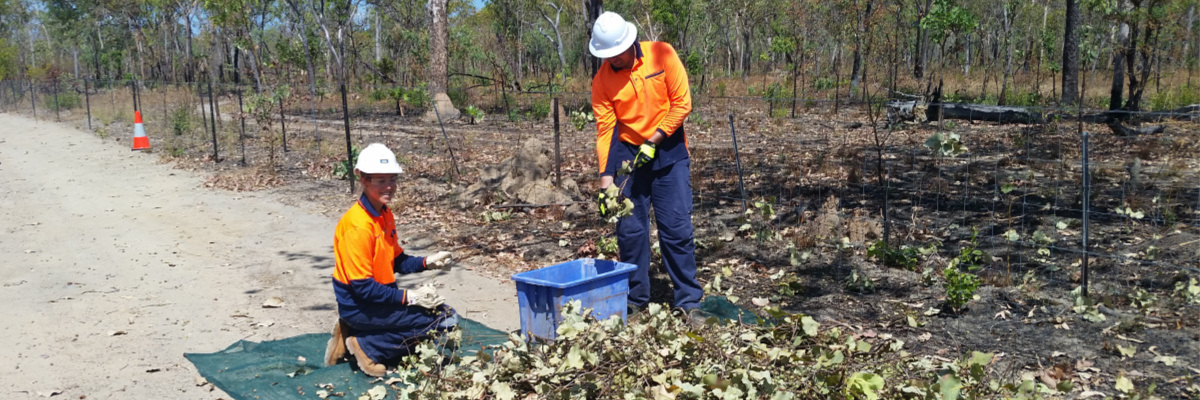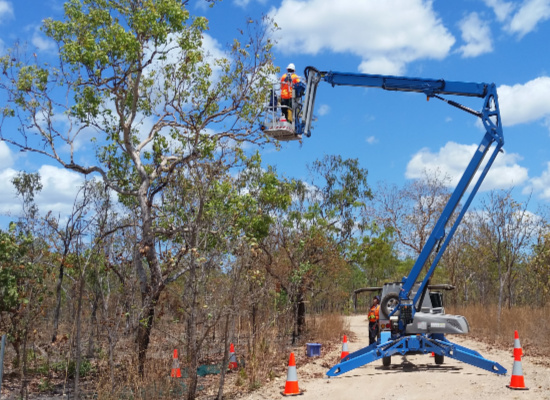Native plants key to seed selection efforts

Staff from Energy Resources of Australia (ERA) and Kakadu Native Plants Pty Ltd have been busy out collecting native seeds as part of the progressive rehabilitation of Ranger Project Area and the Jabiluka Mineral Lease.
The seeds will grow into the native trees and shrubs identified as suitable for planting onsite and will play an important role in providing fresh clean air, storing carbon, restoring biodiversity, and providing future habitat for wildlife.

ERA have provided assurances to our stakeholders including the Mirarr people that rehabilitation will restore the environment consistent with the surrounding park and we have a team of world-class rehabilitation and local experts helping us to keep that promise.
The partnership with local indigenous supplier Kakadu Native Plants Pty Ltd was formed in 2005 with the goal to propagate local seeds collected with a permit from the mine lease and within Kakadu National Park. By raising saplings from local seeds the species had already proven themselves able to adapt and thrive in the unique Northern Territory landscape.
Over thousands of years these native tree species have evolved to adapt to the unique seasons of Kakadu from the monsoon in the wet season, fire in the dry, through to six months with no rain at all.
Seed selection must also be culturally appropriate to the area as both the Jabiluka Mineral Lease and Ranger Project Area are located on Aboriginal land surrounded by, but separate from the UNESCO World Heritage-listed Kakadu National Park and hold important connections for the traditional owners of the region.
In consultation with the Mirarr people, more than 16,000 tube stock were planted at Jabiluka between 2005 and 2015, from 22 different native species including, Acacia, Eucalyptus, Corymbia and Terminalia.
ERA continues to undertake research and monitor the progression of the rehabilitation, learning from and adapting techniques. The monitoring has demonstrated resilience, good survival rates, and the return of other native flora and fauna.
ERA’s long-term vision is to return the disturbed area to a viable ecosystem in line with its obligations to stakeholders and regulators, and the expectations of the community.

